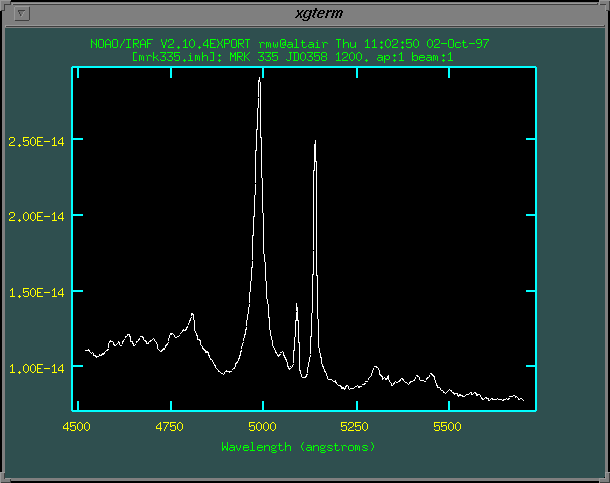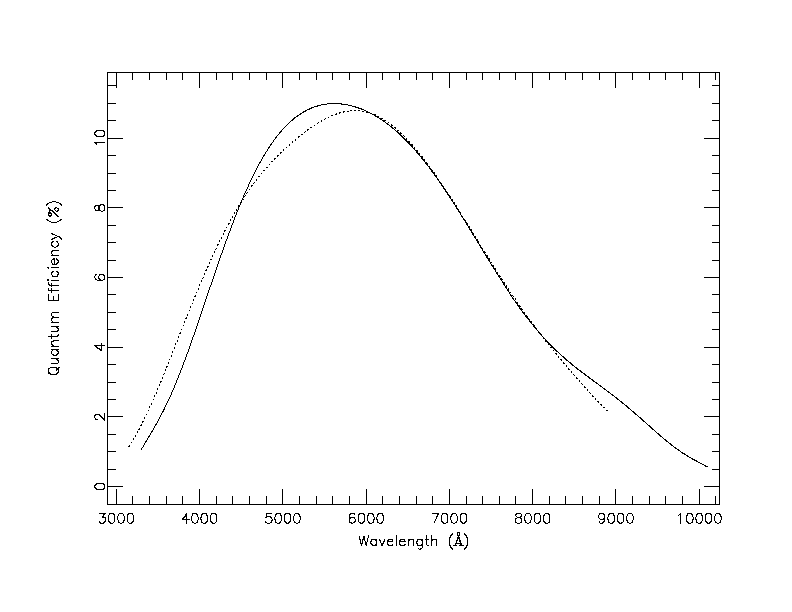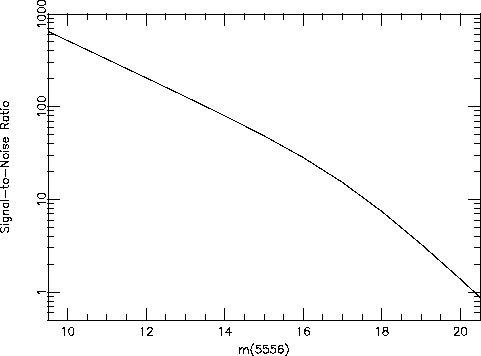

This page is currently under construction, but comments are welcome.
Last updated: January 7, 1998


Instrument Scientist and Staff Contact: R. Mark Wagner, Department of Astronomy, Ohio State University; Lowell Observatory, 1400 West Mars Hill Road, Flagstaff, AZ 86001, (520) 779-0106, email: rmw@lowell.edu
Contents:
The Boller and Chivens CCD Spectrograph (CCDS) is a conventional optical grating spectrograph operating in the 3200 - 9500 Å region for use on the Perkins 1.8-m telescope of the Ohio Wesleyan and Ohio State Universities at the Lowell Observatory. It was acquired by the Ohio State University through a grant from the National Science Foundation in 1970 for stellar spectral classification programs. Eight gratings are available providing spectral resolutions between 400 and 12,000 assuming a 2 arcsec wide entrance slit. The slit width is continuously adjustable between 1 and 20 arcsec. The detector is a Loral 1200 × 800 CCD utilizing permanent backside charging and a dual-layer anti-reflection coating which provide high quantum efficiency between 3200 and 9500 Å. The CCD read noise is 7 electrons at a gain of 2 electrons per ADU. Both FeNe and HeAr lamps are available for wavelength calibration. An internal quartz-halogen lamp provides a continuous spectrum for flatfields. At the lowest dispersion, the total system quantum efficiency is about 11% at 5500 Å. An ISIT camera records the image provided by the telescope on the polished entrance slit jaws and for an integration time of a few seconds, point sources with magnitudes just below the POSS limit can be seen over most of the 3 arcmin field of view. A signal-to-noise ratio of 10 per pixel can be achived in a 1 hour exposure for m(5556) = 19.5 mag with the 150 lines per mm grating under conditions of good seeing and transparency.
Optical layout
Pictures of the mounted CCDS: Southeast view; Northeast view; Northwest view; Southwest view
CCD characteristics and parameters
Gratings and spectral information
| Grating (grooves per mm) | Blaze (order, angle, wavelength) | Dispersion (Å/pixel) | Coverage (Å) | Resolution (Å) (2" slit) |
| 150 | 1st / 2.15 / 4700 | 3.40 | 3650 | 11.8 |
| 158 | 1st / 3.63 / 7530 | 3.25 | 3600 | 11.1 |
| 350 | 1st / 4.30 / 4026 | 1.47 | 1565 | 5.0 |
| 600 | 1st / 8.63 / 4700 | 0.88 | 910 | 2.8 |
| 600 | 2nd / 22.03 / 5875 | 0.45 | 460 | 1.2 |
| 900 | 1st / 12.10 / 4377 | 0.59 | 610 | 1.8 |
| 1200 | 2nd / 37.0 / 4713 | 0.21 | 230 | 0.4 |
| 1800 | 1st / 26.75 / 4700 | 0.30 | 300 | 0.7 |
Notes: The 158 gpm and 1200 gpm gratings are currently not in holders. Perspective users should contact RMW as to their availability and performance..
Performance and throughput


Slit width adjustment
The slit consists of two 2.5" long polished and aluminized jaws. This is a biparting slit and the jaws are continuously adjustable over a range from 5 to 1200 microns. Both jaws move in the direction of the slit length for changes in slit width. The jaws remain parallel up to widths of approximately 500 microns. For larger openings, some tapering of the slit will be noticed.
The adjustment of the slit width is controlled by a micrometer located on the west side of the spectrograph (see west view). This micometer reads the slit width directly in microns. A knurled ring at the base of the micrometer barrel is a lock and when rotated fully CW locks the micrometer barrel against accidental rotation. To release the lock, turn the ring to the full CCW position. Each rotation of the micrometer translates the slit 50 microns.
The following table lists the micrometer settings corresponding to several popular slit widths in arcseconds. For example, for a width of 2 arcsec and micrometer setting of 120, one would (1) close the slit by rotating the dial CCW until it is past zero, (2) rotate CW until zero is reached and resistence is felt from the dial, (3) rotate CW two full turns (=100 microns or units), and (4) rotate CW 20 microns or units thus stopping at a setting of 120. Slit widths smaller than 2 arcsec should not be used at the Perkins telescope since they result in a significant loss of light with typical 2-2.5 arcsec seeing.
| Width (arcsec) | Micrometer (microns) |
| 1.0 | 60 |
| 1.5 | 90 |
| 2.0 | 120 |
| 3.0 | 180 |
| 5.0 | 300 |
| 7.5 | 450 |
| 10.0 | 600 |
| 12.0 | 720 |
Order sorting filters
At present, eight order separation filters are available to block light from higher orders. They are called LW350, LW360, LW370, LW400, LW420, LW450, LP495, and LP600. All of these filters are long-wave passband filters. The number in the filter designation identifies the wavelength in nanometers at which 50% maximum transmission occurs. LP495 is a yellow cut-on filter and its half-power turn-on wavelength is at 4950 Å and provides blocking to ~1 µm. LP600 is a red cut-on filter with half-power turn-on wavelength of 6000 Å. Over the range of sensitivity of the CCDS it is redundant with LP495 for the most part. For blocking solutions in the red, LP495 should be the filter of choice. Note: Insertion of a order separation filter moves the focus of the CCDS approximately -50 units as measured on the collimator focus with respect to the best focus without a filter.
Plot of the LW350-LW450 transmission curves
Plot of the LP495 and LP600 transmission curves
Comparison lamp templates
Mounting and preparation instructions (authorized personnel only)
Additional documentation and information